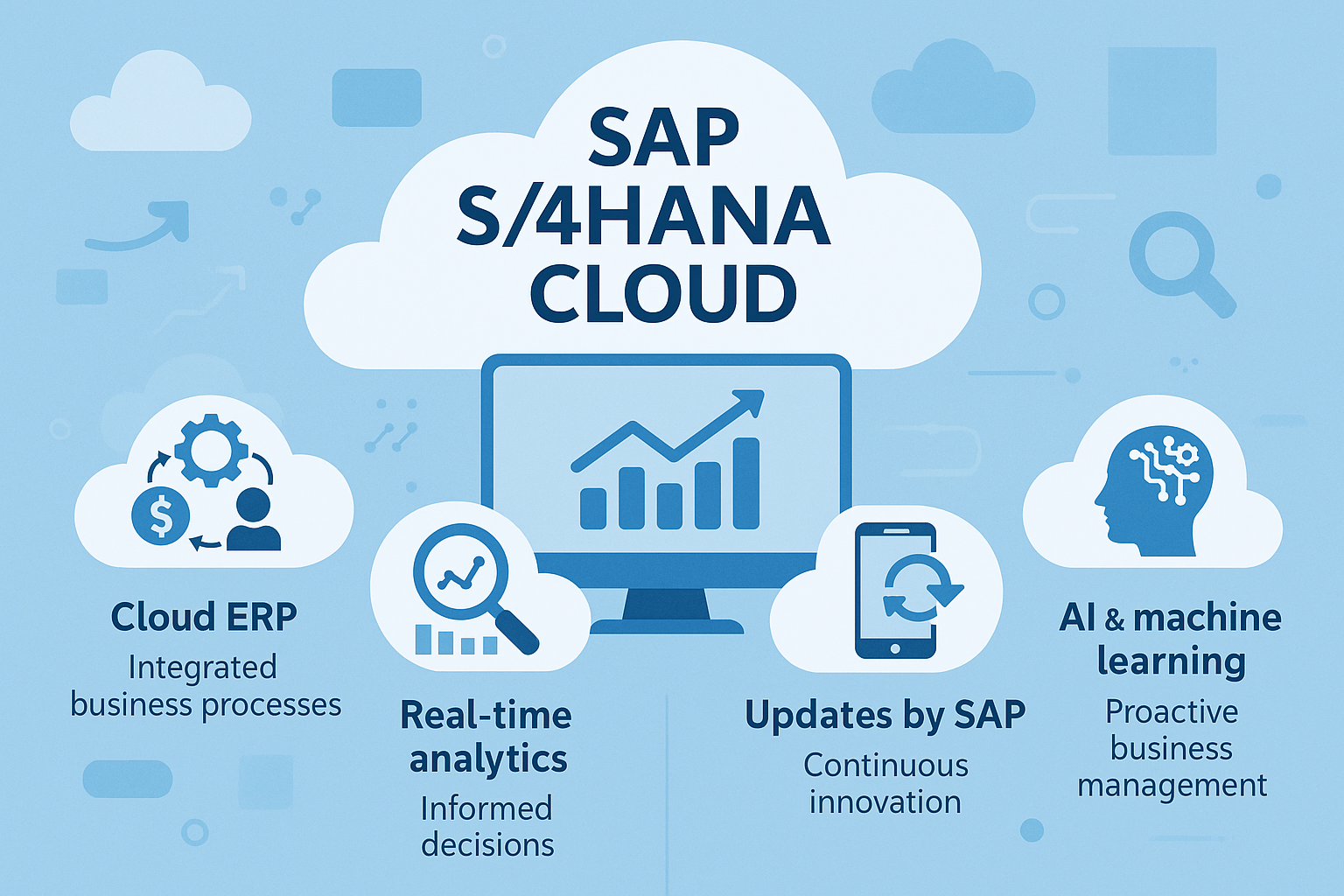Lesson Title: Introduction to SAP S/4HANA Cloud
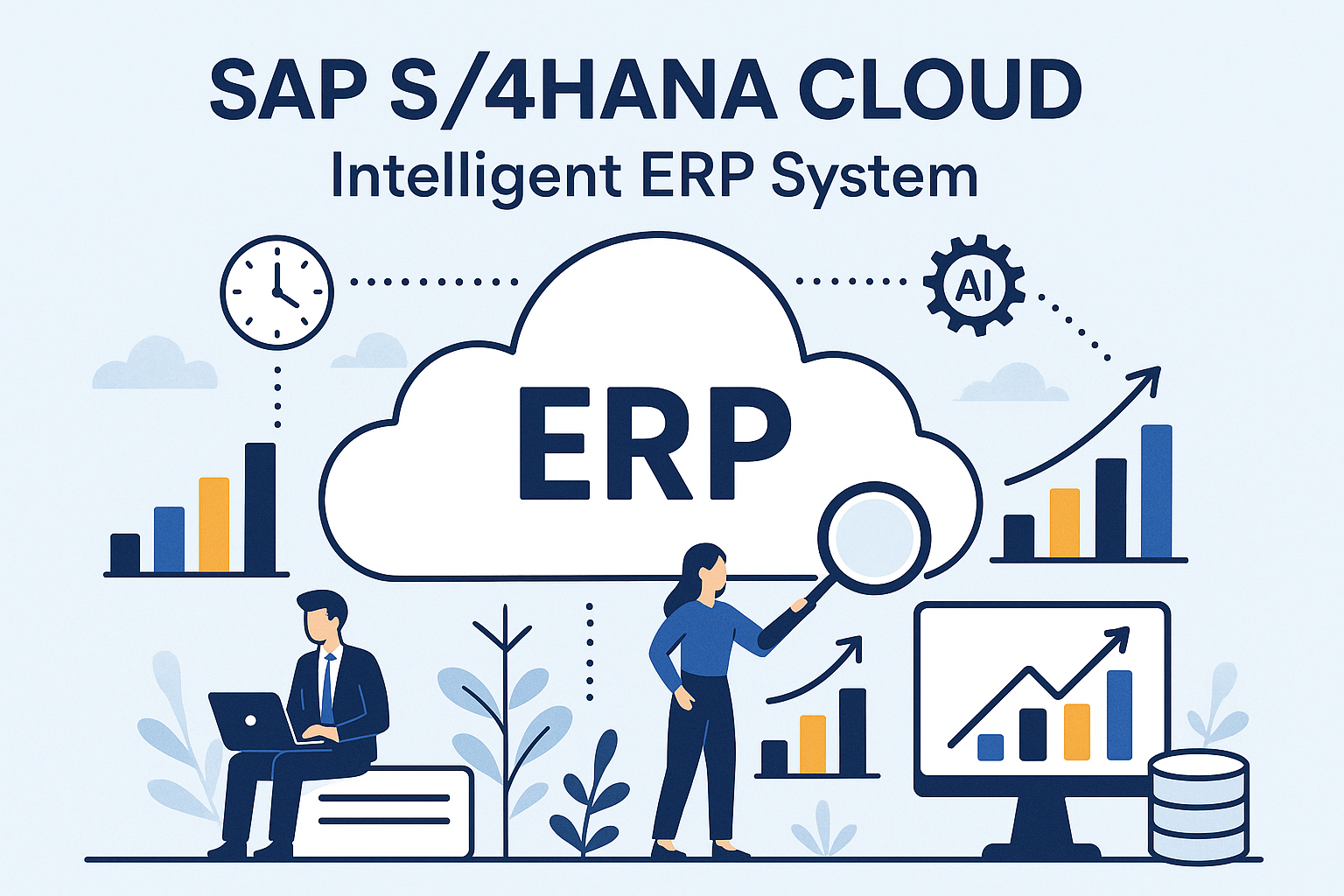
Lesson Description: In this lesson, you’ll explore SAP S/4HANA Cloud, SAP’s latest cloud-based ERP system. We’ll use Apple as a practical example to demonstrate how global enterprises use this modern software to efficiently manage their operations, enhance decision-making, and adapt rapidly to changing business environments.
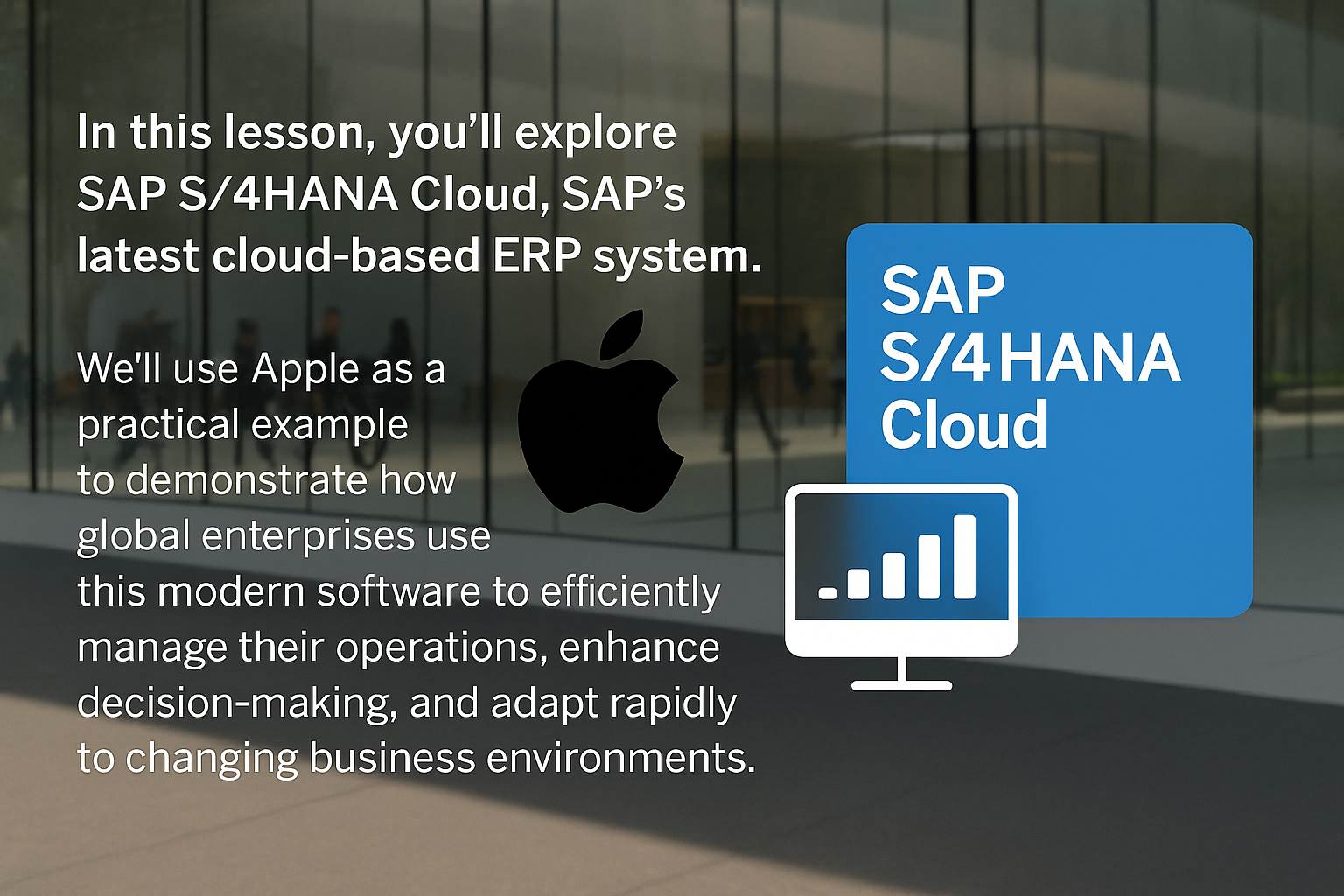
Lesson Learning Objectives:
-
Define SAP S/4HANA Cloud and understand its purpose.
-
Recognize the main features and benefits offered by SAP S/4HANA Cloud.
-
Apply practical examples to illustrate how businesses, such as Apple, leverage SAP S/4HANA Cloud.
Lesson Key Points:
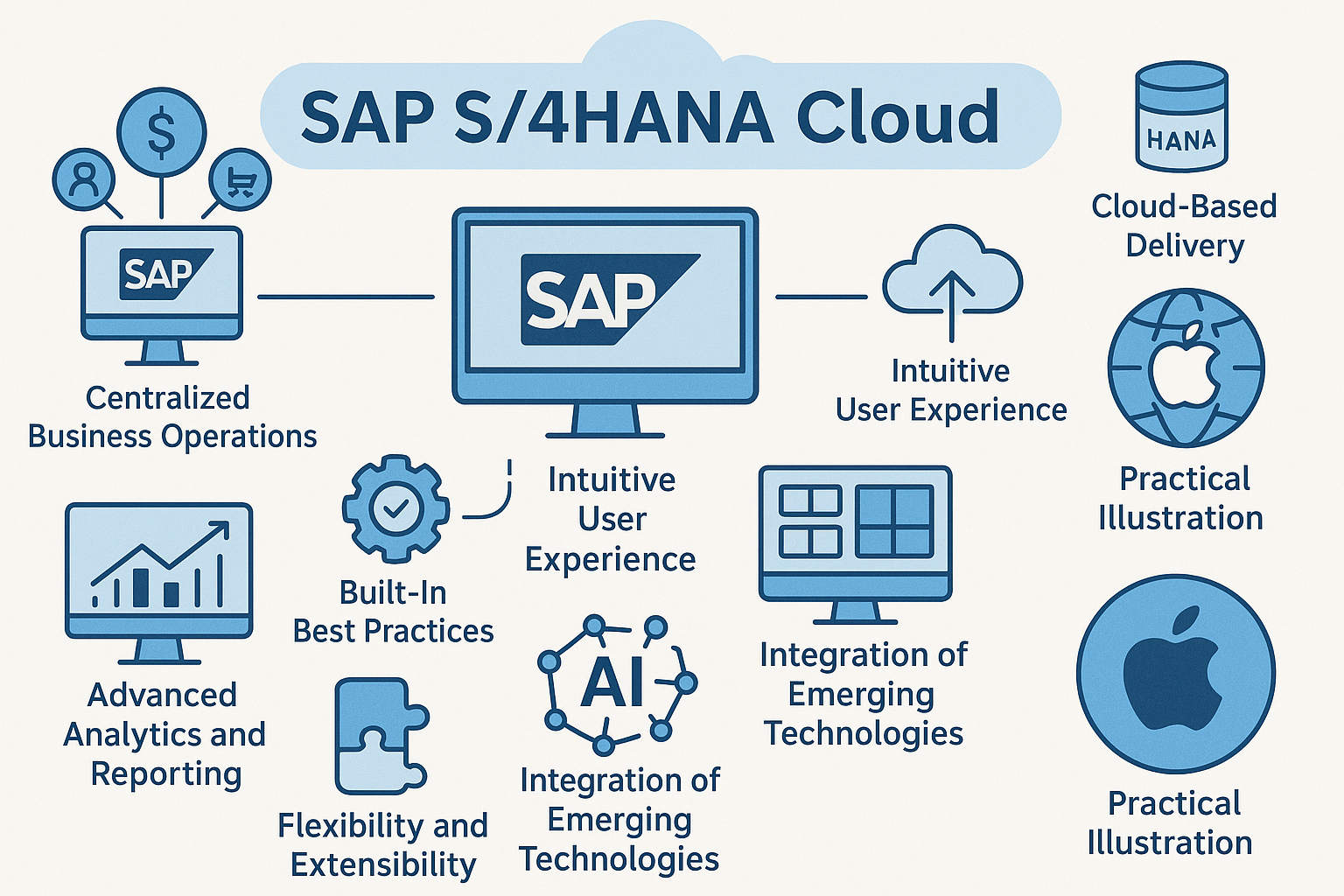
✅ Understanding SAP S/4HANA Cloud: SAP S/4HANA Cloud is a powerful cloud-based Enterprise Resource Planning (ERP) solution. It combines the robust features of SAP’s traditional S/4HANA suite with the flexibility, scalability, and accessibility of cloud computing. Organizations access the software online, eliminating the need for on-premise installations and complex hardware management.
✅ Centralized Business Operations: SAP S/4HANA Cloud integrates multiple business functions, including finance, procurement, sales, manufacturing, supply chain, and human resources, into a single cohesive platform. This centralization ensures seamless data flow between departments, providing real-time visibility and comprehensive control over operations.
✅ Real-Time Performance with HANA Database: At its core, SAP S/4HANA Cloud utilizes SAP’s innovative HANA in-memory database. This powerful database allows organizations to process vast amounts of data instantly. Real-time analytics and rapid data processing enable businesses to respond swiftly to market changes, enhance forecasting accuracy, and make informed, timely decisions.
✅ Cloud-Based Delivery Advantages: Because SAP manages the infrastructure, companies no longer face the burden of routine maintenance, security management, or software upgrades. SAP regularly updates S/4HANA Cloud, automatically providing users with the latest features and improvements. This model ensures minimal disruptions and consistent system availability.
✅ Built-In Best Practices and Rapid Deployment: SAP S/4HANA Cloud incorporates industry-standard best practices, offering pre-configured processes based on SAP’s extensive experience. Companies can quickly deploy and start using the system, significantly reducing implementation times and enhancing the return on investment. This rapid deployment is particularly beneficial for newly acquired businesses or expanding subsidiaries.
✅ Intuitive User Experience with SAP Fiori: SAP S/4HANA Cloud features SAP’s modern user interface, known as Fiori. This intuitive, user-friendly interface simplifies navigation, with tile-based dashboards and graphical displays. Users benefit from reduced training time and improved productivity, as essential tasks and data insights become readily accessible and easy to manage.
✅ Advanced Analytics and Reporting: With SAP S/4HANA Cloud, transactional and analytical functions are integrated into one system. Users can generate real-time reports without requiring separate data warehouses. For instance, Apple’s finance team can immediately view profitability reports for new products or quickly analyze sales performance by region, enhancing strategic decision-making.
✅ Integration of Emerging Technologies: SAP S/4HANA Cloud integrates modern technologies such as artificial intelligence (AI), machine learning (ML), robotic process automation (RPA), and Internet of Things (IoT). These capabilities automate routine tasks, enhance predictive insights, and optimize operational efficiency. For example, machine learning can help Apple predict supply chain delays, enabling proactive management and reducing disruptions.
✅ Flexibility and Extensibility: While SAP S/4HANA Cloud promotes standardized processes, it also offers flexibility through customization and integration options. Companies can create custom fields, workflows, or integrate external applications through APIs. This adaptability allows organizations to align the ERP system closely with their specific operational requirements.
✅ Practical Illustration (Apple Example): Imagine Apple’s global operations managed entirely within SAP S/4HANA Cloud. Finance teams can seamlessly consolidate worldwide sales data in real-time. Procurement managers have instant visibility into component availability and supplier statuses, ensuring smooth production cycles. Executives gain immediate insights into key performance indicators (KPIs), such as revenue growth and inventory turnover, facilitating agile strategic decisions.
Lesson Summary: This lesson provided a detailed introduction to SAP S/4HANA Cloud, highlighting its features, benefits, and practical applications through the example of Apple. SAP S/4HANA Cloud delivers a unified cloud-based ERP solution, integrating critical business processes into one platform. It leverages real-time analytics, intuitive interfaces, automatic updates, and emerging technologies to enhance operational efficiency and strategic agility. Businesses using this modern ERP solution experience reduced complexity, increased adaptability, and improved decision-making capabilities.
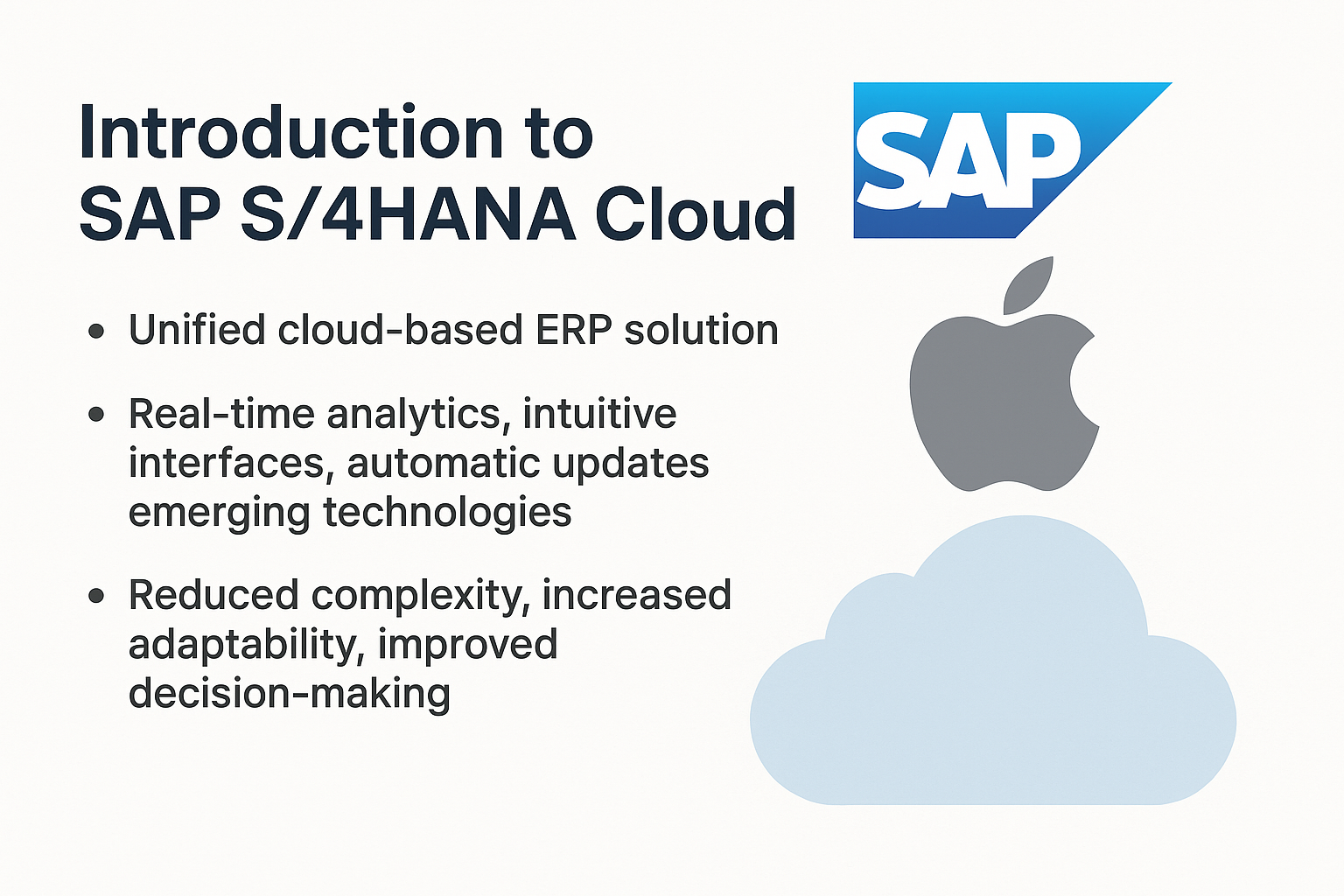
Lesson Takeaways:
-
SAP S/4HANA Cloud centralizes essential business functions into one cloud-accessible ERP solution, promoting operational transparency and efficiency.
-
Real-time analytics and integrated data processing capabilities empower companies to make timely, informed decisions.
-
Regular, automated updates by SAP ensure the ERP system remains innovative and aligned with current technological advancements.
-
Advanced technologies like AI and machine learning embedded within the ERP system enable proactive business management and operational optimization.
-
Practical examples from global enterprises like Apple demonstrate the transformative potential of SAP S/4HANA Cloud in managing complex, global operations effectively.
